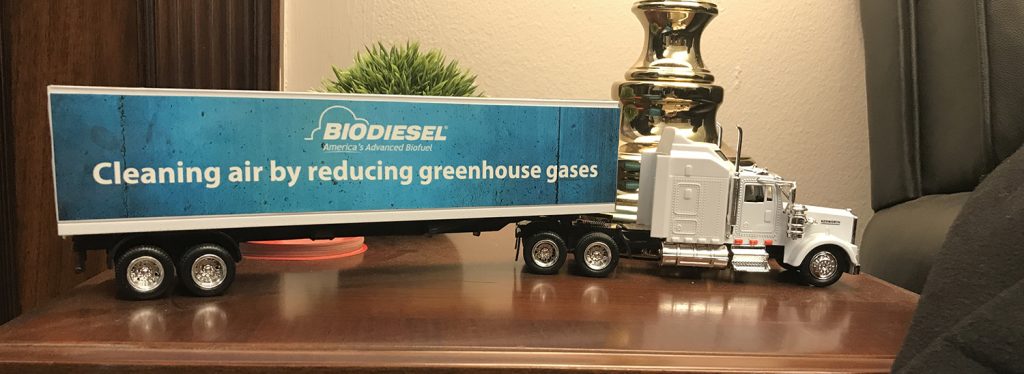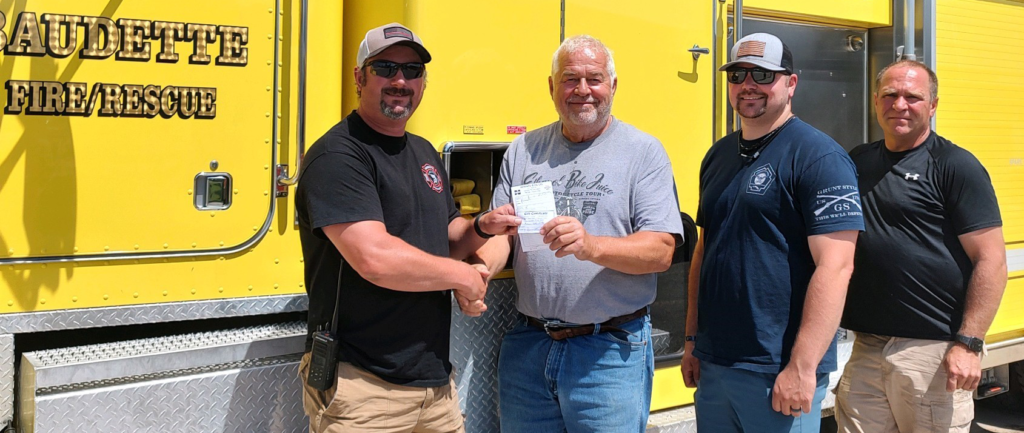While Minnesota is a pioneer for biodiesel and continues to be a model for other states, there is always an opportunity to learn more from others – especially California. Through the continued investment of time, energy and money, California has now become one of the largest markets for biodiesel in the country.
“We as biodiesel backers need to do extra in an effort to influence the market,” says Minnesota Soybean Growers Association (MSGA) Director Lawrence Sukalski. “The California market is huge and that’s because of their extra work.”
The National Biodiesel Board (NBB) held their annual Golden Biomass Diesel Tour in Monterrey, Calif., this week to help growers learn more about the current and future use of America’s first and only advanced biofuel. This three-day event consisted of farmers from across the country, including three Minnesota soybean farmers, who bring back a wealth of knowledge and ideas to boost Minnesota’s biodiesel industry.
Minnesota Soybean Research & Promotion Council (MSR&PC) Director Rob Hanks, and MSGA Director Trevore Brekken joined Sukalski on the tour. Both say they are excited about the future of biofuels and about its future in Minnesota.
One of the goals of the tour was to show how education programs and initiatives helped spur biodiesel use in the nation’s most highly populated state. This also helped farmers see first-hand how their checkoff dollars are being put to action.

“It is evident that the demand for renewable and biofuels is here in California,” says Brekken. “It is our job as soybean producers to help fill the demand here and everywhere.”
Dating back to 2007, when Gov. Arnold Schwarzenegger signed the Low Carbon Fuel Standard (LCFS), California wasted no time getting to work and is now leading the nation in lowering emissions. The state is on track to meet or even exceed its goal of reducing its carbon use by 18 percent by 2030. Biodiesel is a big part of the fuel supply in the Golden State as it continues to be used in vehicles across the state. Taking it a step further, it now is being used to heat homes and help residents reduce energy costs while being conscience about the environment around them.
California’s biodiesel consumption has increased to the initial 14 million gallons annually to 600 million gallons in 2017, with a trajectory toward one billion gallons by 2024. By 2030, the state is projected to consume two billion gallons of biodiesel.
“Learning how California’s low carbon fuel regulations work is crucial in soy oil biodiesel becoming a bigger piece of the fuel market,” says MSGA Executive Director Joe Smentek. “This tour helped us find out what we can do to lower soy oils CARB score and sell even more biodiesel to California.”
With the deep appreciation for renewable energy, California has many opportunities to grow and learn about new uses for soybean oil. Farmers toured a range of businesses, including AGRON Bioenergy, owned by Western Iowa Energy, LLC. In a prime location to produce biofuels, just outside the California bay area, they continue to put forth innovative ways to assist with the LCFS.
”The LCFS has increased the potential for the biodiesel market in California,” Hanks says. “They have a lot of regulatory challenges, but the really emphasize the benefits of renewable and sustainable fuels which has made it successful.”
The nation’s largest market for biodiesel continues to grow and the largest home heating oil market is burning more bioheat to keep homes and businesses warm. With average soybean yields on the rise, the added demand for soybean oil is needed for farmers and the market. This success in the California market has now spread throughout the West Coast, creating more demand for biodiesel and ultimately helping Minnesota farmers.
“The path forward is unclear,” says Brekken, “but with perseverance, it will get done and we will grow the market.”







